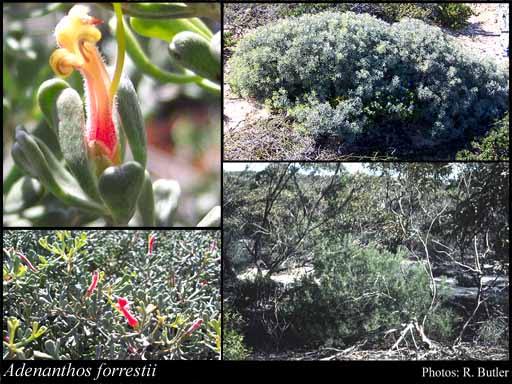- Reference
- S.Sci.Rec. 2:230 (1882)
- Conservation Code
- Not threatened
- Naturalised Status
- Native to Western Australia
- Name Status
- Current
Erect, lignotuberous shrub, 0.3-1.3 m high. Fl. red & cream/cream-yellow, Apr to Jun or Aug to Dec. White/grey sand over limestone. Coastal dunes.

Scientific Description
Shrubs, 0.5-2 m high. Leaves alternate, 7-25 mm long, 2-3 mm wide, glabrous; lamina flat, clearly widest above the middle, once divided, pinnately divided, tripartitely divided or divided only at the apex, entire, shallowly divided or divided to the midrib, with glands at the leaf (or leaf lobe) apex. Inflorescences yellow or red; innermost bracts 5-9 mm long; peduncles 2-3 mm long. Perianth 20-24 mm long, hairy; ovary hairy; pistil 24-30 mm long, pollen presenter erect, style glabrous. Flowers in April, May, June, July, August, September, October, November or December. Occurs in the Eremaean (ER) or South-west (SW) Botanical Province(s), in the Coolgardie (COO), Hampton (HAM) or Mallee (MAL) IBRA subregion(s).
Distribution
- IBRA Regions
- Coolgardie, Hampton, Mallee.
- IBRA Subregions
- Eastern Mallee, Hampton, Mardabilla.
- IMCRA Regions
- Eucla.
- Local Government Areas (LGAs)
- Dundas.